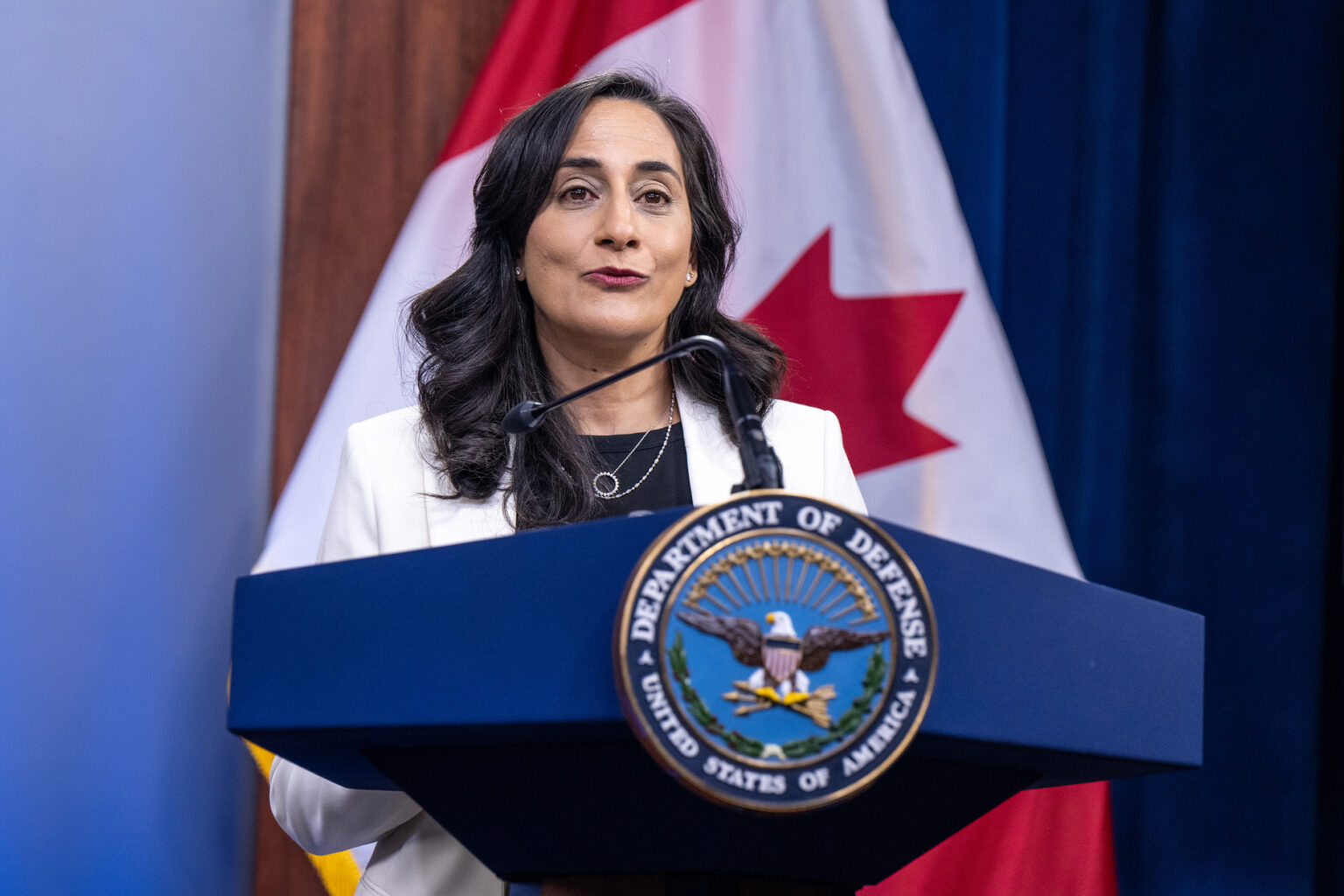THE WATCH STAFF
Canada’s renewed commitment to helping protect North America is being borne out by recent news of high-profile military projects.
Defence Minister Anita Anand, who has promised announcements of security improvements in conjunction with the United States, said that Ottawa is weighing the possibility of joining the U.S. ballistic-missile defense system, according to a May 10, 2022, online report in Politico.
“We are certainly taking a full and comprehensive look at that question as well as what it takes to defend the continent across the board,” Anand, pictured, said in response to an audience question after a speech to the Canadian Global Affairs Institute, according to Politico.
The comments from Anand were notable because Ottawa had previously declined a 2005 U.S. invitation to participate in ballistic missile defense.
Canada, which partners with the U.S. in the North American Aerospace Defense Command (NORAD), is re-evaluating its defense policy in the wake of Russia’s invasion of Ukraine.
Anand’s ballistic-missile comments came in the wake of news that Canada reportedly will spend at least $1 billion (U.S. $772 million) for an advanced radar system to protect major population centers in North America, according to the Ottawa Citizen newspaper.
Defense industry officials were briefed April 7 in Ottawa about the project — the Arctic Over-the-Horizon Radar — by the Royal Canadian Air Force, the Citizen reported April 25.
The project would “provide long-range surveillance of northern approaches to the major population centers in North America by establishing a northward-aimed high frequency over-the-horizon radar system in southern Canada,” according to the briefing provided to the Citizen.
The Arctic Over-the-Horizon Radar would start operating in 2028. The preliminary cost estimate could go much higher according to military officials, the Citizen reported.
Anand stressed in her May 10 comments that strengthening continental defense extends beyond NORAD.
“We are taking a very bold and aggressive look at what we need to do,” Anand said, according to Politico.
The immediate problem for both the U.S. and Canada is determining what to do about NORAD’s North Warning System (NWS), which is estimated to be obsolete starting in 2025, according to the Citizen. North Warning System radar sites were built from 1986 to 1992 and were mainly designed to track Russian bombers, the newspaper said.
The U.S. government has urged Canada to move forward on improvements to continental defense. But there have been questions inside the Department of National Defence about whether there would be funding for such projects and whether they would be supported by Canadians, the Citizen reported.
But the Russian invasion of Ukraine provided the government of Prime Minister Justin Trudeau with the basis to move forward on both the purchase of F-35 stealth fighters from the U.S. as well as NORAD modernization, according to the newspaper.
“The current defense and security climate also has underscored that we need to do more to bolster our defenses in Canada and North America at large,” Anand said, according to the Citizen.
IMAGE CREDIT: TECH. SGT. JACK SANDERS/U.S. AIR FORCE

